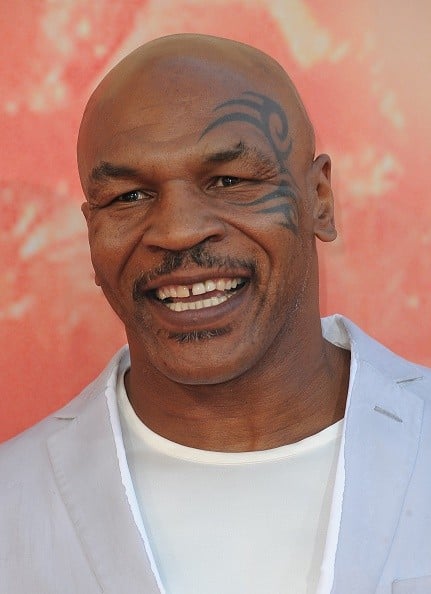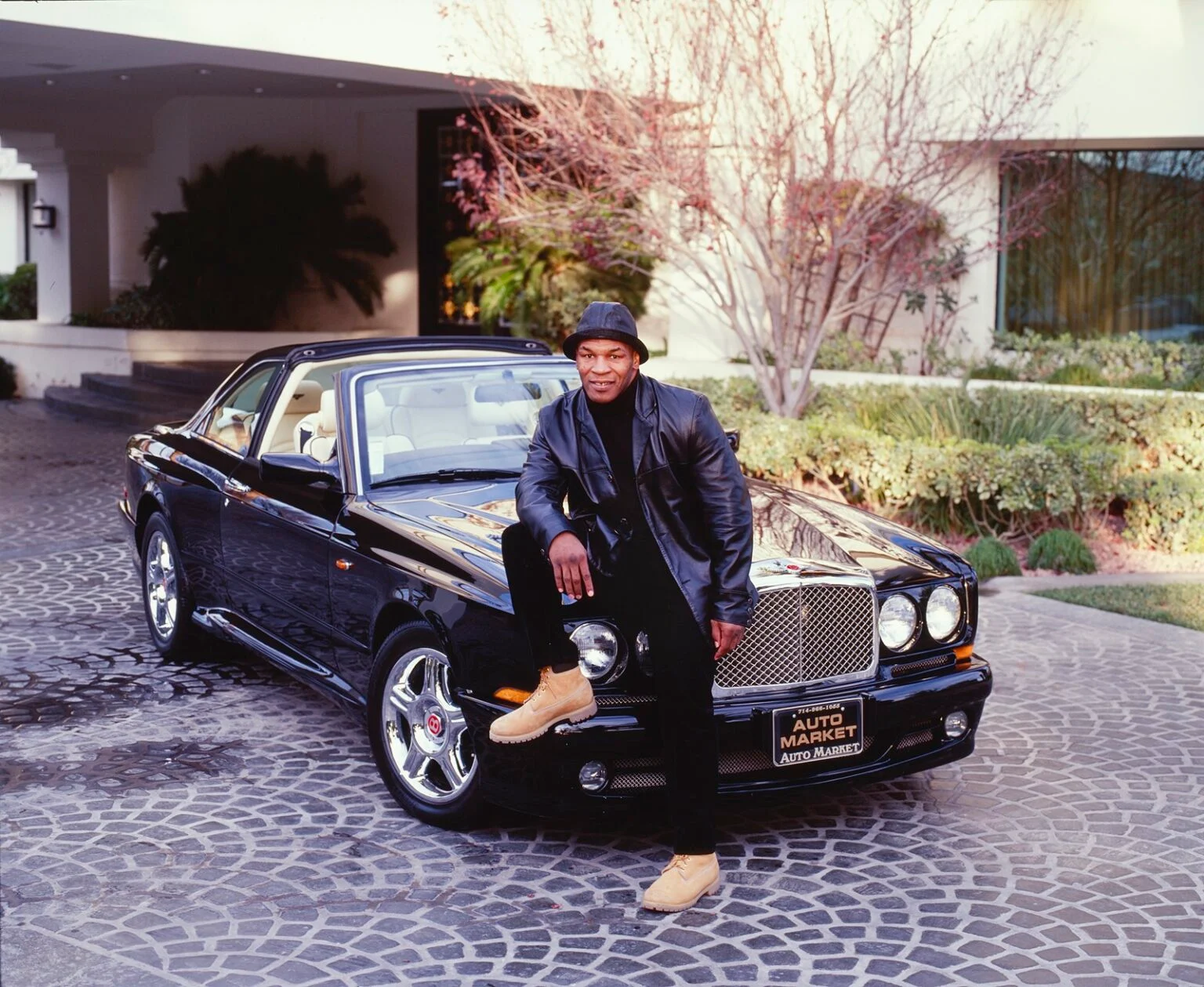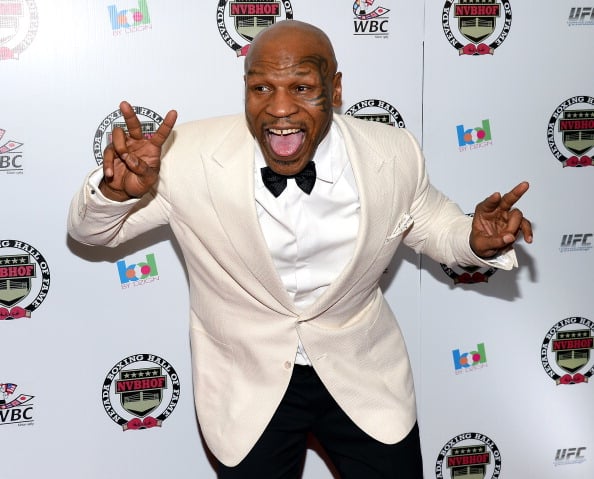Mike Tyson is one of the most iconic athletes in sports history, known as much for his ferocious boxing style as for his dramatic personal and financial ups and downs. Once worth an estimated $300 million, Tyson experienced one of the most dramatic financial collapses in sports, eventually filing for bankruptcy in 2003. However, in recent years, Tyson has staged an impressive financial comeback, thanks to media appearances, exhibition matches, and entrepreneurial ventures. As of 2024, Mike Tyson’s estimated net worth is $30 million, including a $20 million payday from a highly anticipated bout with Jake Paul.
This in-depth article explores Tyson’s net worth journey—from his record-breaking earnings and extravagant spending to bankruptcy and his eventual resurgence.

Mike Tyson’s Current Net Worth
As of 2024, Mike Tyson’s net worth is approximately $30 million. That figure includes a recent $20 million windfall from a blockbuster Netflix fight against YouTuber-turned-boxer Jake Paul, scheduled for November 2024. Though it pales in comparison to his peak net worth, Tyson’s financial resurgence is notable given his prior bankruptcy and debts exceeding $23 million.
Mike Tyson at His Financial Peak
In the late 1980s and early 1990s, Tyson was undisputed heavyweight champion of the world, the highest-paid athlete globally, and a cultural phenomenon. At the height of his fame, Tyson’s net worth reached $300 million, bolstered by fight purses, endorsement deals, and appearance fees.
Tyson’s massive earnings came from a mix of high-profile boxing matches, lucrative television contracts, and sponsorship deals with brands like Pepsi and Nintendo. He was not only a sportsman but a global celebrity.

Lavish Spending and Extravagance
Tyson’s incredible wealth didn’t last long. He was notorious for his extravagant lifestyle, spending with abandon on cars, jewelry, pets, and a massive entourage.
Exotic Pets and Animal Care
Tyson famously owned Bengal tigers, which cost $70,000 each. He built them a custom habitat in his backyard and paid an animal trainer $125,000 per year to care for them.
Entourage and Unusual Staff
Tyson maintained a large entourage, including a man whose only job was to wear fatigues and scream “guerrilla warfare” at press events—earning $300,000 annually.
Cars, Jewelry, and Houses
Between 1995 and 1998, just after being released from prison, Tyson went on a spending spree:
- $4.5 million on vehicles, many given to friends
- $300,000 annually on gardening
- $240,000 monthly in “walking-around” money
- $230,000 on phones and pagers
- $100,000 monthly on jewelry and clothing
Tyson owned multiple homes, including a 21-room mansion in Connecticut (later sold to rapper 50 Cent), a property in Las Vegas, and a gold-decorated mansion in Ohio. One of his Las Vegas homes cost $4 million and was renovated entirely.
At one dealership, Tyson once spent $1.5 million in minutes, purchasing five Bentley Azures. When the dealership only had two in stock, they had to fast-track three from Rolls-Royce.
One of the most infamous purchases? A $2 million gold bathtub for his then-wife, actress Robin Givens.
Bankruptcy and Financial Collapse
In 2003, Tyson declared bankruptcy, citing $23 million in debt. Despite earning over $430 million during his career (equivalent to over $700 million today when adjusted for inflation), years of reckless spending, poor financial management, and alleged exploitation by his promoters and entourage left him broke.
Even by 2010, Tyson was still struggling financially. In an emotional interview on The View, he said:
“I’m totally destitute and broke. But I have an awesome life. I have an awesome wife who cares about me… I had a lot of fun. It just happened. I’m very grateful.”
Mike Tyson’s Career Earnings: A Fight-by-Fight Breakdown
Throughout his boxing career, Tyson earned over $443 million in fight purses alone. Here are some of the most notable match earnings (inflation-adjusted figures included for context):
- Trevor Berbick (1986) – $1.5 million
- Larry Holmes (1988) – $5 million
- Michael Spinks (1988) – $20 million (~$42 million today)
- Frank Bruno II (1996) – $30 million (~$50 million today)
- Evander Holyfield I & II (1996–97) – $60 million combined
- Lennox Lewis (2002) – $103 million (~$148 million today), with $75 million from PPV
- Other high-profile opponents included:
- Tony Tubbs: $10 million
- Peter McNeeley: $25 million
- Julius Francis: $10 million
- Roy Jones Jr. (2020): $10 million
- Jake Paul (2024): $20 million
Tyson’s total career earnings exceed $443 million, making him one of the highest-paid boxers in history.
How Don King and Others Impacted His Finances
A significant portion of Tyson’s wealth was reportedly lost due to exploitation and mismanagement, particularly by promoter Don King. Court documents revealed King took 30% or more of Tyson’s earnings—illegal under Nevada law. King’s family was also on the payroll:
- $100,000 per fight to King’s wife as a consultant
- $50,000 each to King’s sons
- Tyson even paid $1,000 per week to the president of the “Mike Tyson Fan Club”—Don King’s daughter
Garnished Earnings and IRS Troubles
Tyson’s financial woes were worsened by IRS garnishments. For example, in 2004, Tyson earned $8 million for fighting Danny Williams, but $6 million was seized by the IRS, leaving him just $2 million.
The Roy Jones Jr. Exhibition
In 2020, Tyson returned for an exhibition fight with Roy Jones Jr. The event generated massive buzz and was sponsored to the tune of $50 million, with both fighters potentially earning $10 million each based on PPV performance. Tyson initially claimed he would donate the money to charity, though his team later walked back that claim slightly.
Financial Comeback: How Mike Tyson Rebuilt His Fortune
Despite his past struggles, Tyson has made a strong financial comeback in the last decade, thanks to savvy investments and a diversified portfolio of media ventures.
Media and Pop Culture Presence
Tyson has made numerous appearances on screen, playing himself in shows and movies such as:
- The Hangover series
- Mike Tyson Mysteries (animated series)
- Cameos in music videos and television talk shows
He also toured a one-man show, Mike Tyson: Undisputed Truth, directed by Spike Lee, which became a hit and aired on HBO.
Cannabis Business
In recent years, Tyson has embraced the legal cannabis industry, founding Tyson 2.0, a marijuana company that markets premium cannabis products, edibles, and CBD items. The venture has proven successful and added a significant new revenue stream.
Early Life and Amateur Career
Mike Tyson was born on June 30, 1966, in Brooklyn, New York. Raised in a tough neighborhood and without a stable father figure, Tyson turned to street fighting at a young age. By 13, he had been arrested 38 times. His life changed when a juvenile detention center instructor introduced him to boxing.
Tyson began training under Cus D’Amato, who would become a father figure and his legal guardian after Tyson’s mother died. Under D’Amato’s guidance, Tyson flourished as a boxer.
Junior Olympics and Amateur Accomplishments
- Won gold medals in the Junior Olympics in 1981 and 1982
- Fought in the 1984 Summer Olympics, losing to Henry Tillman
Professional Boxing Debut and Meteoric Rise
Tyson made his professional debut in 1985 at age 18. He won his first fight against Hector Mercedes via first-round TKO, a pattern that would define much of his early career.
Major Career Milestones
- In 1986, Tyson became the youngest heavyweight champion in history after defeating Trevor Berbick at age 20.
- In 1987, he unified the heavyweight titles by beating James Smith and Pinklon Thomas.
- In 1988, Tyson dismantled Michael Spinks in just 91 seconds, cementing his status as an unstoppable force.
Decline and Incarceration
Tyson’s career was derailed in 1991 when he was convicted of rape and sentenced to six years in prison, serving three. His time behind bars marked a turning point, and while he returned to the ring upon release, he was never quite the same.
Notable fights during his post-prison career included:
- Wins over Peter McNeeley and Frank Bruno
- Controversial loss and infamous ear-biting incident in Evander Holyfield II
- Loss to Lennox Lewis in 2002
- Final professional fight in 2005 against Kevin McBride
Tyson Today: More Than Just a Boxer
Now in his late 50s, Tyson remains culturally relevant and financially active. He has rebranded himself as a media personality, entrepreneur, and advocate for cannabis reform.
His podcast, Hotboxin’ with Mike Tyson, features celebrity guests and has millions of downloads. His Tyson 2.0 cannabis line is expanding rapidly in multiple states.
Final Thoughts: A Tale of Triumph, Turmoil, and Tenacity
Mike Tyson’s financial journey is a cautionary tale—and an inspiring one. From being worth $300 million to filing for bankruptcy, and now bouncing back to $30 million, his story mirrors his boxing style: unpredictable, explosive, and full of comebacks.
Though he may never again reach the dizzying financial heights of his youth, Tyson’s second act as a businessman, performer, and cannabis mogul has proven he’s more than just a boxing legend—he’s a survivor who’s found peace, purpose, and prosperity in an entirely new arena.








